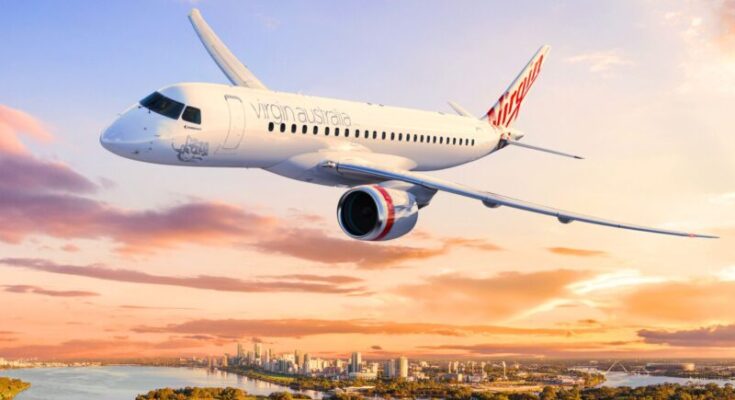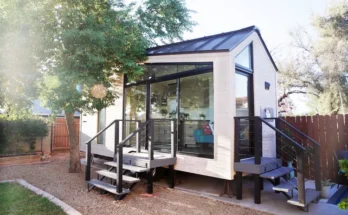Introduction
As global air travel continues to recover and evolve, airlines are focusing more than ever on operational efficiency and sustainability. Among the many narrowbody aircraft competing for dominance, one model has emerged as the clear leader in fuel efficiency: the Embraer E195-E2. Developed by Brazilian aerospace manufacturer Embraer and launched in 2013, the E195-E2 has rewritten expectations for what a modern regional narrowbody can achieve — combining advanced aerodynamics, cutting-edge engine technology, and passenger-focused innovation. This article dives into the design features, engine performance, and market position of the E195-E2, explaining why it stands above its competition.
The Rise of the Embraer E195-E2
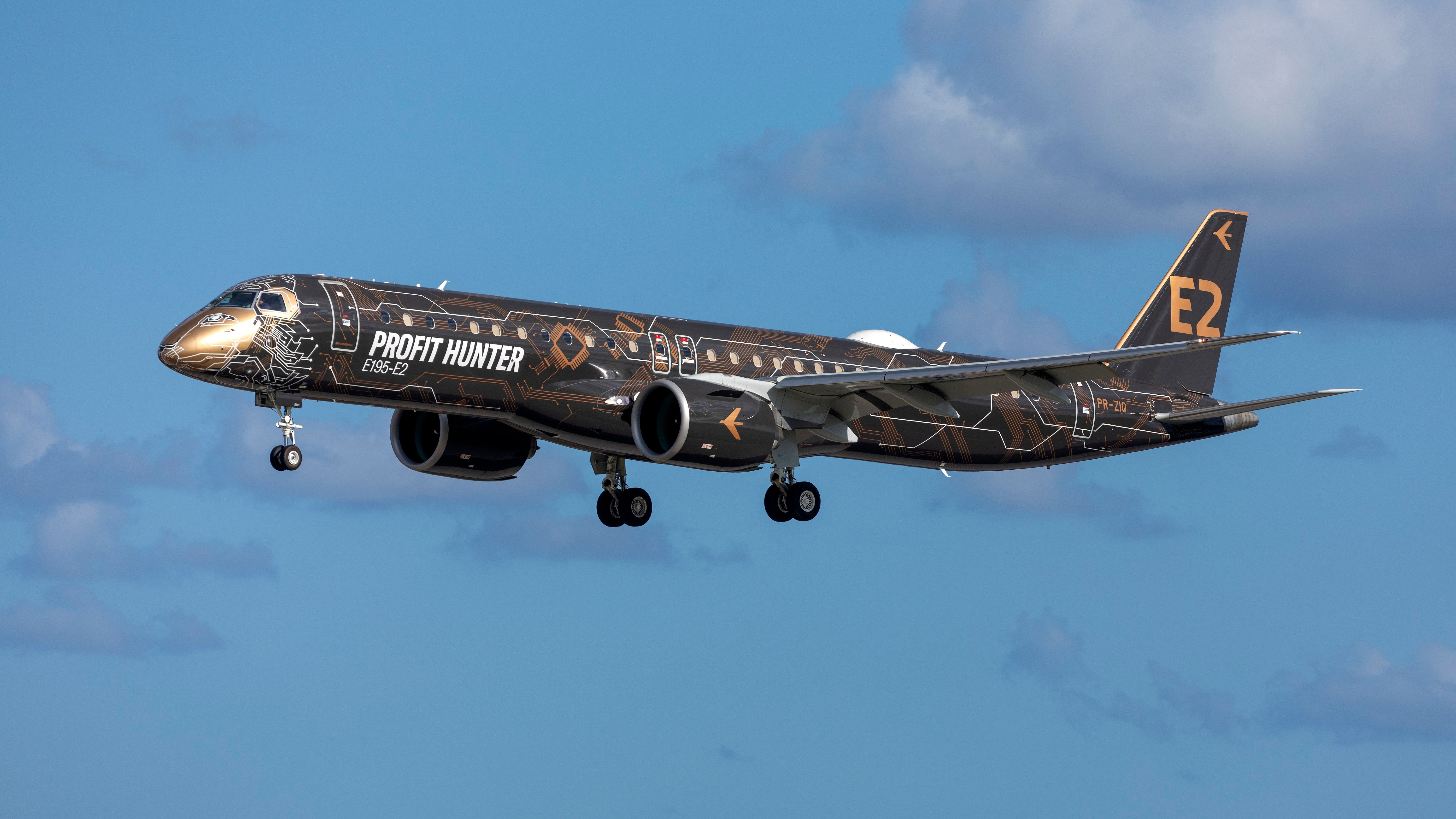
Embraer’s E-Jet family has been a commercial success since its introduction, but the company knew it had to evolve to meet the growing demands for sustainability and lower operating costs. The E2 program — encompassing the E175-E2, E190-E2, and E195-E2 — was announced at the 2013 Paris Air Show. Of the three, the E195-E2 is the largest, designed to carry up to 146 passengers while offering exceptional range and efficiency.
This next-generation model was designed not merely as an upgrade but as a true technological leap. The E195-E2 has a maximum takeoff weight (MTOW) of 137,800 pounds (62,800 kg) and a maximum range of 3,400 nautical miles. For airlines, this means it can comfortably handle routes previously reserved for larger, less efficient jets.
Design Innovations That Drive Efficiency
Several design improvements contribute to the E195-E2’s outstanding fuel economy:
-
High-Aspect Ratio Wing and Swept Tips: These allow for greater aerodynamic efficiency by reducing drag, particularly during cruise.
-
Fly-by-Wire Flight Controls: An advanced electronic flight control system fine-tunes aircraft handling in real-time, improving performance and reducing pilot workload.
-
Optimized Airframe: Embraer significantly redesigned the aircraft’s structure compared to the original E-Jet family, incorporating new horizontal stabilizers, landing gear, pylons, and systems.
-
Lightweight Materials: Strategic use of composites and advanced aluminum alloys reduces the aircraft’s overall weight.
All these elements combine to deliver double-digit reductions in fuel consumption compared to previous-generation E-Jets — a major achievement in a competitive market.
Cabin Configurations: Flexibility Meets Comfort
The Embraer E195-E2 is designed to be highly flexible, meeting the varied needs of different airlines:
| Configuration | Number of Seats | Layout |
|---|---|---|
| Three-Class | 120 seats | 12 seats @ 36” pitch (Business), 24 @ 34” pitch (Premium Economy), 84 @ 31” pitch (Economy) |
| Single-Class | 132 seats | 132 seats @ 31” pitch |
| High-Density Single-Class | 146 seats | 146 seats @ 28” pitch |
This flexibility allows airlines to tailor the aircraft to both premium markets and high-volume, cost-sensitive routes. Passengers also benefit from larger windows, improved overhead storage bins, and access to Wi-Fi, streaming entertainment, and personal power outlets at every seat.
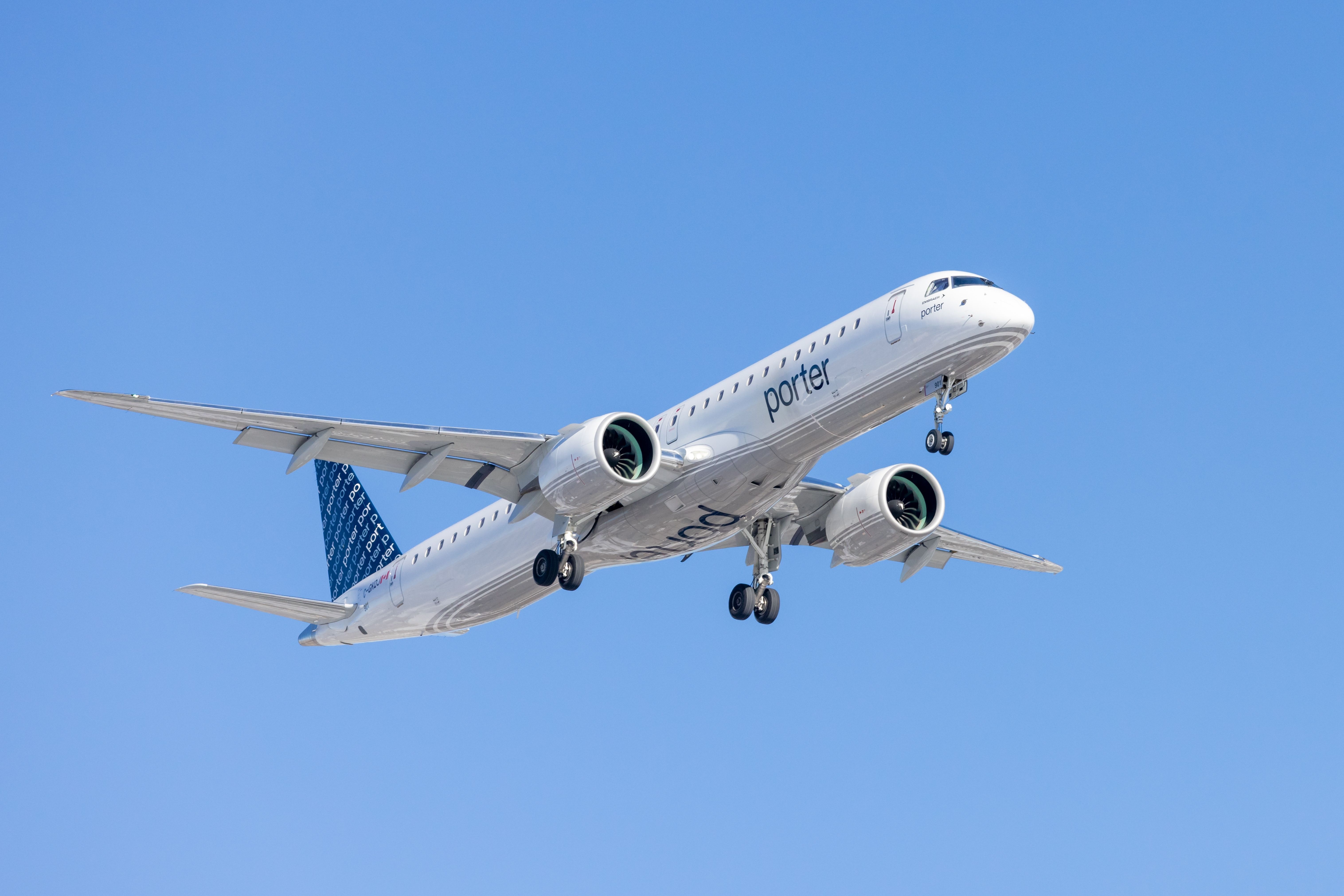
Technical Specifications
| Specification | Value |
|---|---|
| Maximum Takeoff Weight | 137,800 lbs (62,800 kg) |
| Maximum Landing Weight | 119,049 lbs (54,000 kg) |
| Maximum Payload | 35,604 lbs (16,150 kg) |
| Maximum Usable Fuel | 30,181 lbs (13,690 kg) |
| Maximum Cruise Speed | Mach 0.82 |
| Takeoff Field Length (Full Pax) | 4,101 ft (1,250 m) |
| Landing Field Length | 4,232 ft (1,290 m) |
| Service Ceiling | 41,000 ft (12,500 m) |
| Range (Full Pax) | 3,000 NM (5,556 km) |
| Maximum Operational Range | 3,400 NM (6,297 km) |
The Powerhouse: Pratt & Whitney PW1900G Engines
At the heart of the E195-E2’s fuel savings is its powerplant: the Pratt & Whitney PW1900G engines, part of the revolutionary GTF (Geared Turbofan) engine family.
Key engine innovations include:
-
Gear System: Separates the fan from the low-pressure turbine, allowing each to operate at optimal speeds for greater efficiency.
-
High Bypass Ratio: Increases thrust while reducing fuel burn and noise.
-
Lower Fan Pressure Ratio: Improves fuel economy and overall engine performance.
The PW1900G engines help the E195-E2 achieve up to 25% greater fuel efficiency compared to older-generation engines, contributing to significant reductions in carbon emissions and operating costs.
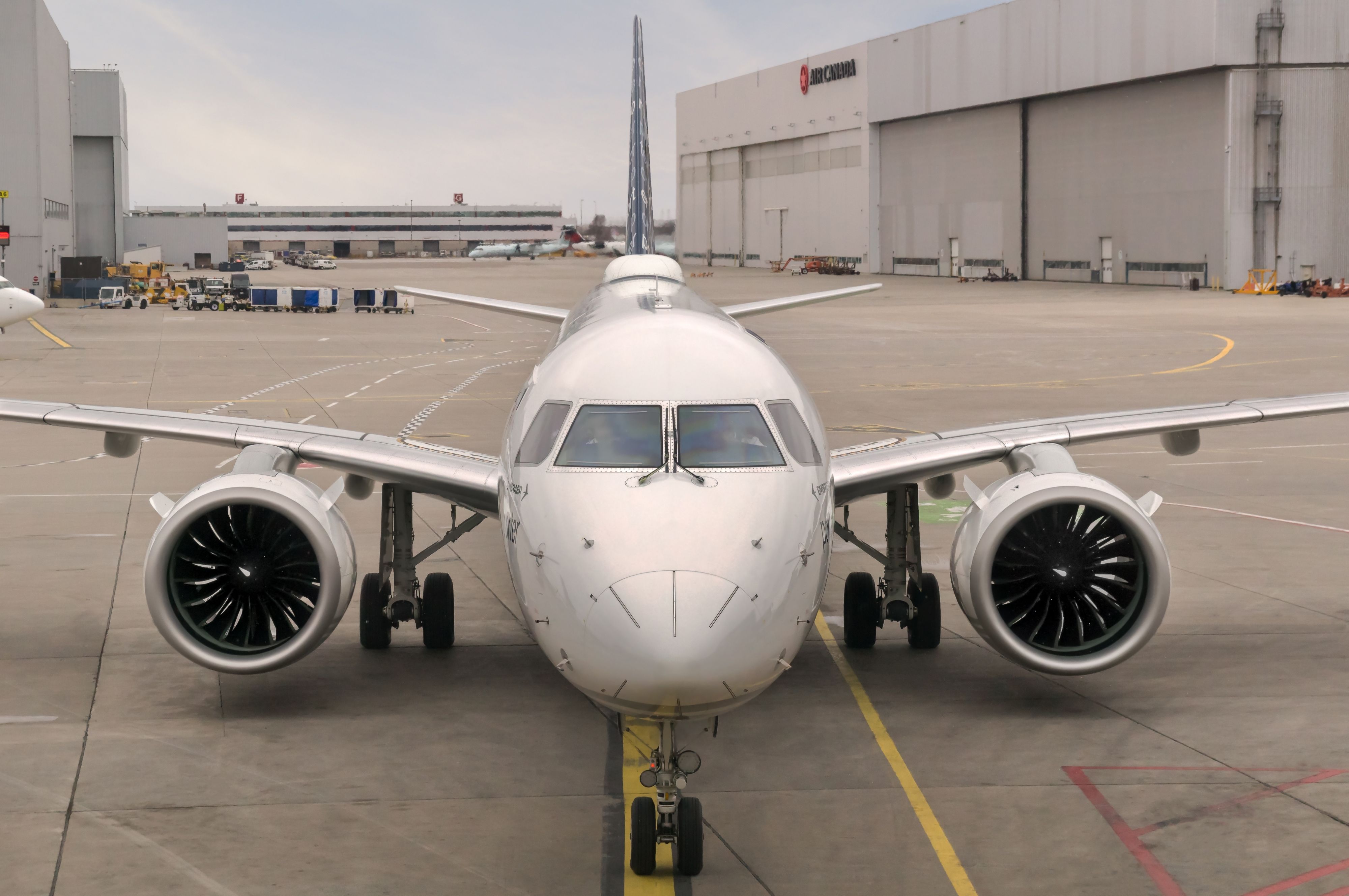
Environmental Impact:
The E195-E2’s environmental performance is equally impressive. Airlines such as Porter Airlines have reported that their E2 fleets emit 165,000 fewer metric tons of CO₂ annually compared to older Airbus A319s. This is roughly equivalent to 279,000 people switching to bicycles for their daily commute.
In addition, Porter Airlines highlights that their 30 E2s emit 45,000 fewer metric tons of CO₂ annually compared to the Airbus A220-300 — requiring the equivalent of 405 soccer fields full of trees to offset.
Noise emissions are also drastically reduced, with the E195-E2 certified to international noise standards and a noise footprint up to 76% smaller than previous-generation narrowbodies.
Market Position: Beating the Competition
While the Airbus A220-100 and A220-300 models are often mentioned in discussions about modern, fuel-efficient narrowbodies, the E195-E2 maintains distinct advantages:
-
Lower Fuel Consumption per Seat: Particularly on high-density routes.
-
Reduced Operating Costs: Simpler, more accessible maintenance with fewer parts compared to larger aircraft.
-
Route Flexibility: Optimized to cover 99.9% of single-aisle routes worldwide.
These strengths make the E195-E2 an attractive proposition for airlines seeking to expand networks while minimizing costs and environmental impacts.
Airlines That Have Invested in the E195-E2
Several airlines globally have embraced the E195-E2’s efficiency:
-
Azul Brazilian Airlines: The launch customer, using the aircraft for domestic and regional services.
-
Porter Airlines: Significantly expanding their fleet with E195-E2s to reach new North American markets.
-
KLM Cityhopper: Using the E195-E2 to replace older E190s for regional European operations.
These carriers cite not just operational savings but improved passenger satisfaction, thanks to the aircraft’s quiet cabin and modern amenities.
The Future: Sustainability and Profitability Hand-in-Hand
As aviation regulators worldwide tighten emissions standards and airlines face mounting pressure from governments and consumers alike, the drive for greener flying has become a business necessity. Embraer’s E195-E2 demonstrates that airlines don’t have to sacrifice profitability to meet these goals.
The combination of aerodynamic excellence, next-generation engines, and smart systems integration makes the E195-E2 a model for future aircraft design. Furthermore, as the industry moves toward sustainable aviation fuels (SAF) and hybrid technologies, aircraft like the E195-E2 will be better positioned to adapt.
Conclusion
The Embraer E195-E2 isn’t just the most fuel-efficient narrowbody jet today — it’s a blueprint for the future of aviation. It delivers significant reductions in operating costs, emissions, and noise, while also enhancing the passenger experience. As the aviation sector continues evolving toward a greener, more sustainable future, the E195-E2 stands as a shining example of what’s possible when innovation meets environmental responsibility.
For airlines looking to balance efficiency, profitability, and sustainability, the choice is clear: the Embraer E195-E2 is the aircraft to beat.
